Solar Installers Level Green
Find top Solar Installer in Level Green
Receive multiple Solar Installer quotes for your project today! Compare profiles, reviews, accreditations, portfolio, etc... and choose the best offer.

Emes Solar
54 reviewsWoodmere, NY, 123 Solar Street, New York, 11598, USEmes Solar is a company focused on change, aiming to provide affordable, clean, and intelligent energy to communities. They install high-quality solar panels and treat clients with Honesty, Integrity, and Quality. Emes Solar offers various services including residential and commercial solar installations, solar generators, and financing options. They operate in multiple states and have completed numerous projects.
- Services
- Why Us?
- Accreditations
- Our Team
- Testimonials
- Gallery
Get Quote
Exact Solar
561 reviews82 Walker Ln, Newtown, PA, 18940, USExact Solar is a local solar expert providing solar energy to Pennsylvania, New Jersey, and Delaware for over 19 years. They are fueled by a passion for providing clean and cost-free energy. Their local team of solar experts are fully committed to supporting customers throughout their solar journey, ensuring they feel confident every step of the way.
- Services
- Why Us?
- Accreditations
- Our Team
- Testimonials
- Gallery
Get Quote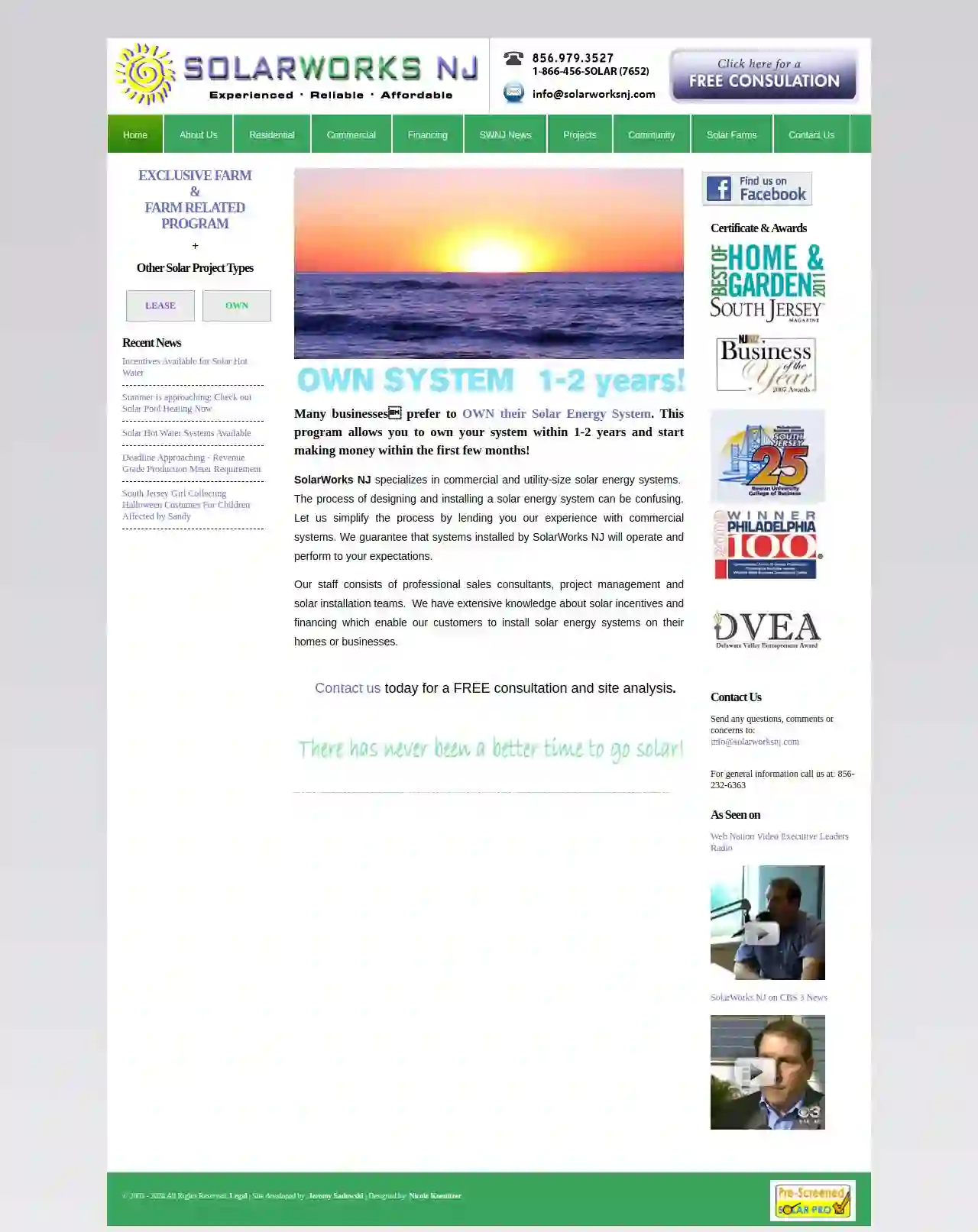
SolarWorks NJ
N/A, USSolarWorks NJ specializes in commercial and utility-size solar energy systems. Our staff consists of professional sales consultants, project management and solar installation teams. We have extensive knowledge about solar incentives and financing which enable our customers to install solar energy systems on their homes or businesses.
- Services
- Why Us?
- Accreditations
- Our Team
- Testimonials
- Gallery
Get Quote
Venture Solar
4.5837 reviewsSouthington, CT, USA, 327 Captain Lewis Dr, 06489, USVenture Solar is a leading provider of solar energy solutions in the Northeast, offering premium service and potential immediate savings. With over 300 trained in-house professionals, they help homeowners save money on the best solar panel system available while replacing electricity and making a better tomorrow for us all.
- Services
- Why Us?
- Accreditations
- Our Team
- Testimonials
- Gallery
Get Quote
AC Power, LLC
51 reviewsSuite 801, 915 Broadway, New York, 10010, USAC Power is a woman-owned solar development company committed to repurposing previously disturbed land for a brighter future through solar development. Our team overcomes the obstacles associated with these sites to successfully bring solar facilities into operation and return the property to revenue-generating use. AC Power is committed to working with transparency, collaboration, and integrity.
- Services
- Why Us?
- Testimonials
- Gallery
Get Quote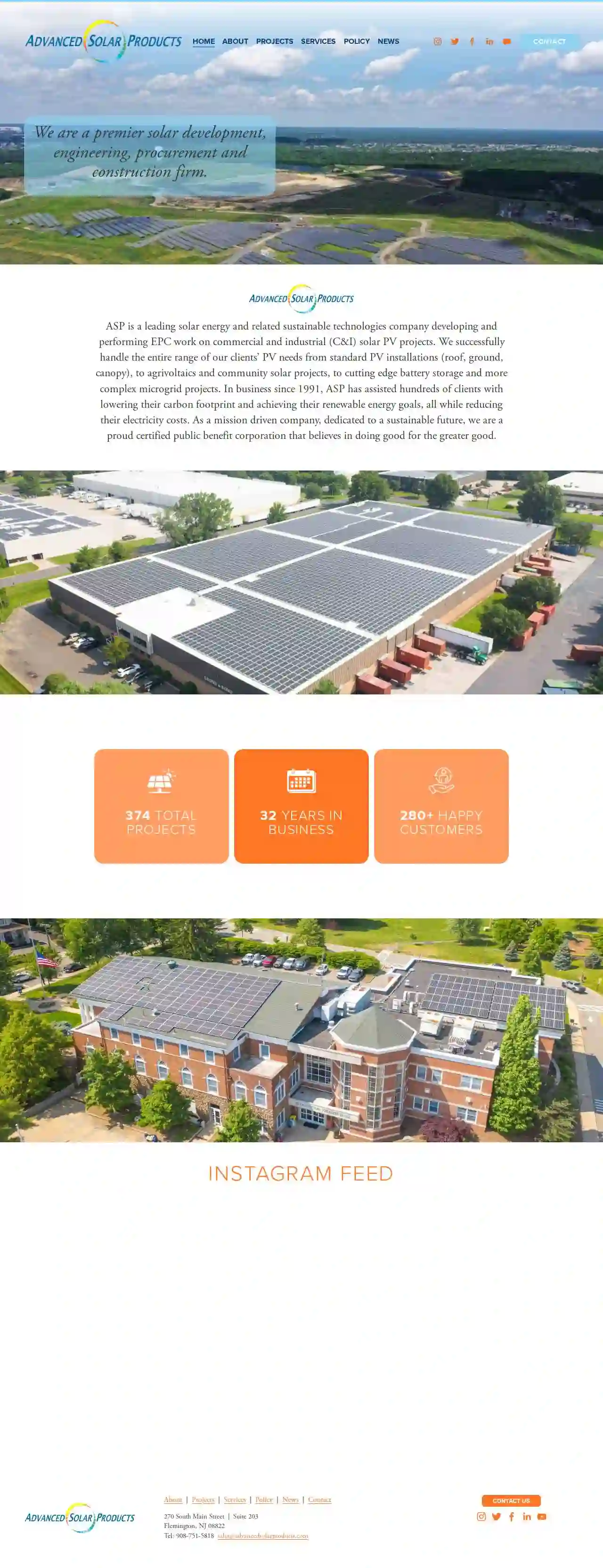
Advanced Solar Products
Suite 203, Flemington, NJ, 270 South Main Street, 08822, USAdvanced Solar Products has been leading the solar revolution in New Jersey since solar’s inception with our innovative designs, our expert installation and our focus on guiding renewable energy policy in a way that works to promote a sustainable future. ASP has taken this experience over the years and has created a strong presence in other markets all along the East Coast and Mid-Atlantic states.
- Services
- Why Us?
- Accreditations
- Our Team
- Testimonials
- Gallery
Get Quote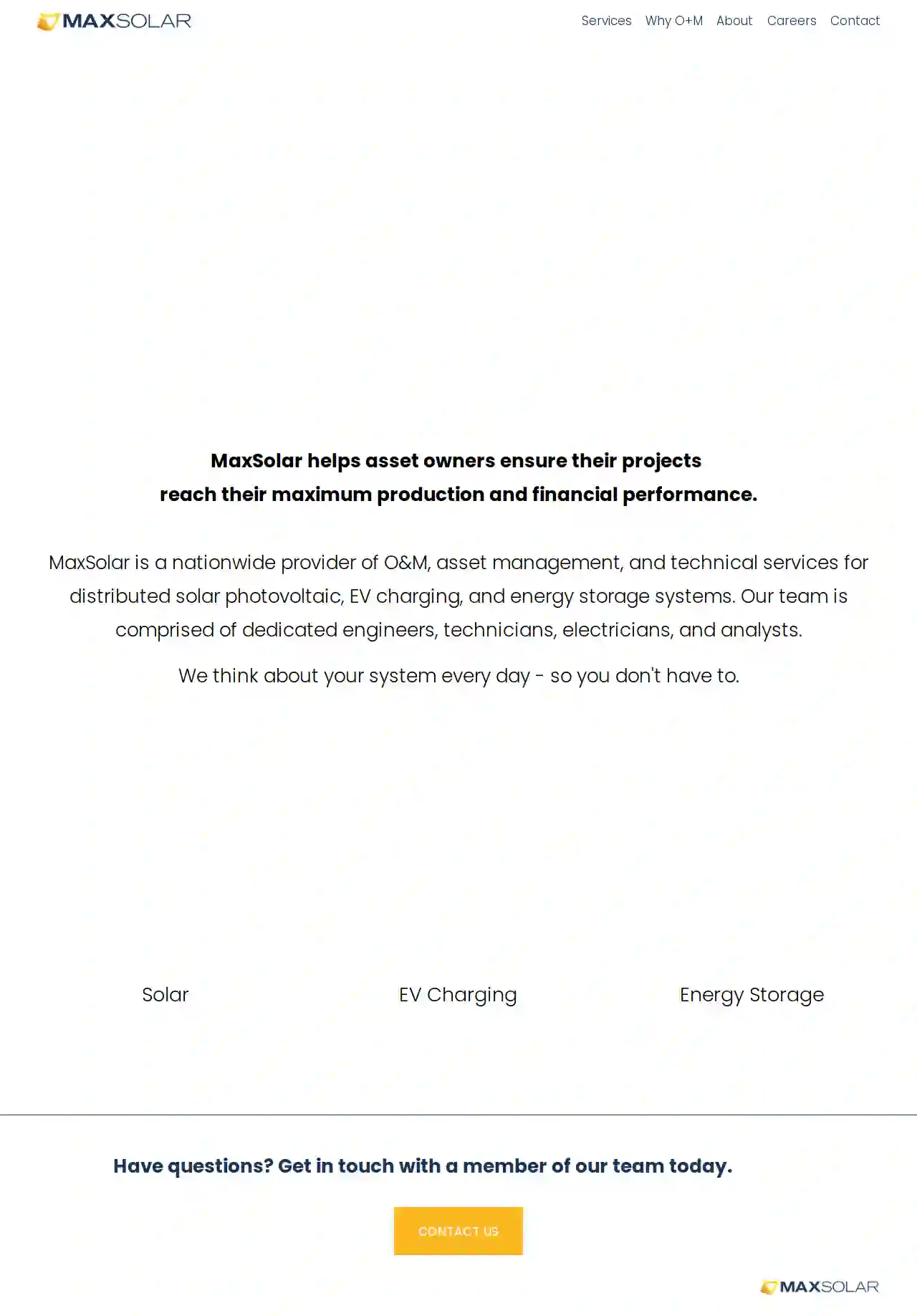
MaxSolar
51 reviewsSuite E, Edison, NJ, 450 Raritan Center Parkway, 08837, USMaxSolar helps asset owners ensure their projects reach their maximum production and financial performance. MaxSolar is a nationwide provider of O&M, asset management, and technical services for distributed solar photovoltaic, EV charging, and energy storage systems. Our team is comprised of dedicated engineers, technicians, electricians, and analysts. We think about your system every day - so you don't have to.
- Services
- Why Us?
- Accreditations
- Our Team
- Testimonials
- Gallery
Get Quote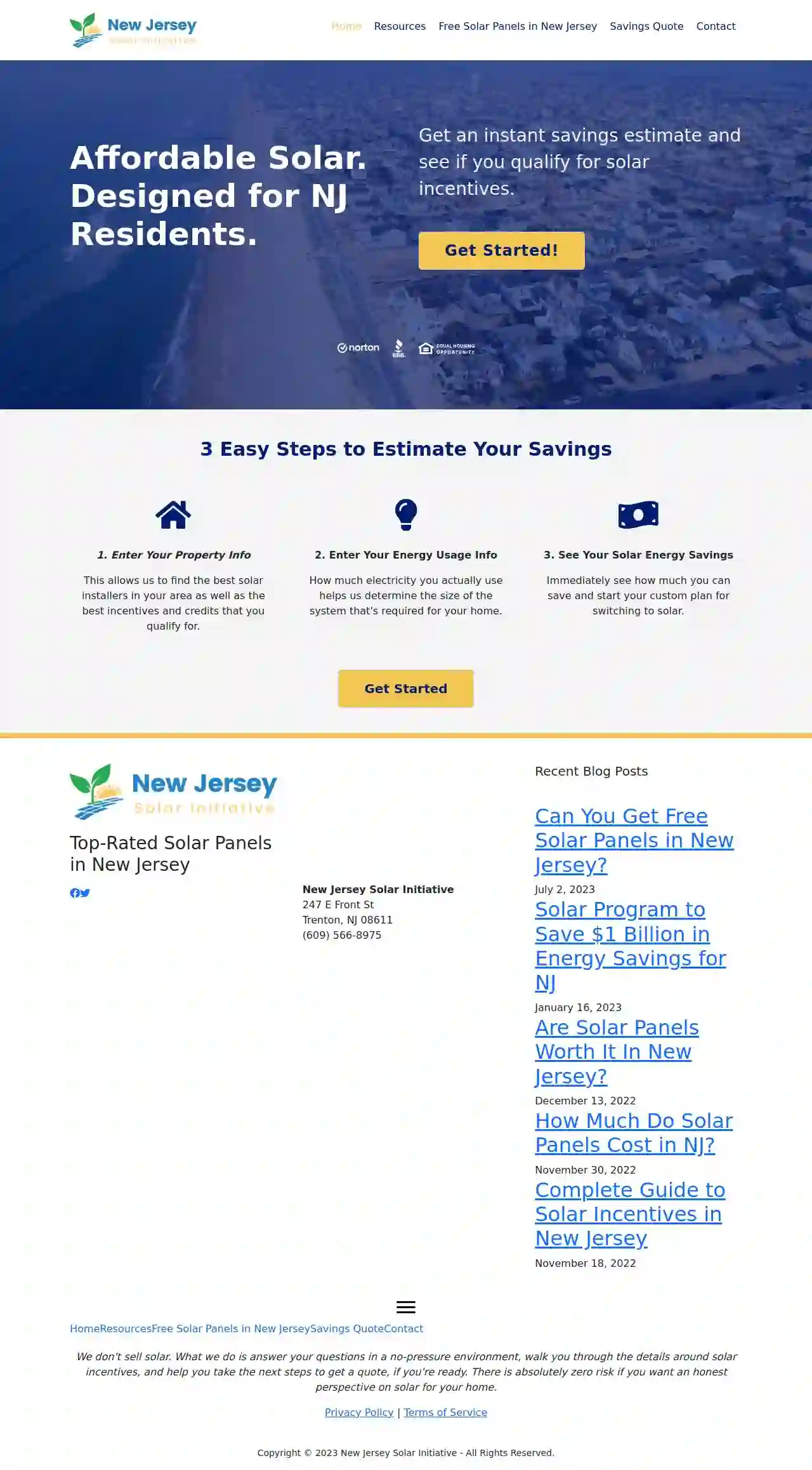
New Jersey Solar Initiative
247 E Front St, Trenton, 08611, USNew Jersey Solar Initiative is a top-rated solar panel provider in New Jersey, offering affordable solar solutions designed for NJ residents. They provide a 3-step process to estimate savings, including entering property and energy usage information to determine the best solar installers and incentives available. Their goal is to help residents switch to solar energy and start saving.
- Services
- Why Us?
- Accreditations
- Our Team
- Testimonials
- Gallery
Get Quote
JK Renewables
4.758 reviews123 Main St, Suite 100, Los Angeles, 90001, USJK Renewables is a company that specializes in helping businesses transition to renewable energy sources, particularly solar energy. They offer a free consultation to calculate the energy needs of a business and provide information on government incentives such as tax credits, depreciation amounts, and cash grants. A percentage of every commercial solar install is donated to the United Breast Cancer Foundation and St. Jude Children's Research Hospital.
- Services
- Why Us?
- Accreditations
- Gallery
Get Quote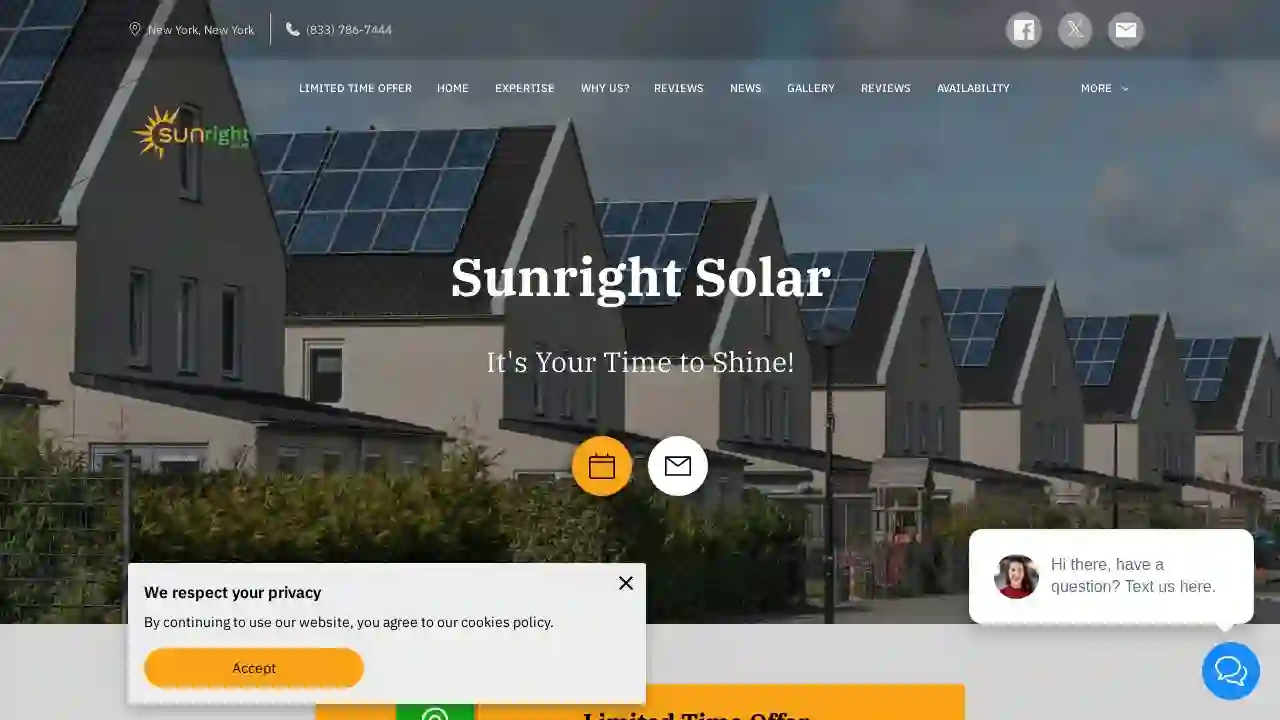
Sunright Solar
4.719 reviews123 Broadway, New York, NY, 10001, USSunright Solar is a fast-growing solar brand in America! We embody the grassroots approach of personalize dedicated customer service to help others take control of their energy costs by upgrading to solar. Benefit of Solar are very straight forward. 1- Saving 30-50% of your energy cost. 2-Increase your Property ...Read more
- Services
- Why Us?
- Accreditations
- Our Team
- Testimonials
- Gallery
Get Quote
Over 4,210+ Solar Installers in our network
Our solar experts operate in Level Green and beyond!
SolarCompaniesHub has curated and vetted Top Solar Installers arround Level Green. Find a top & reliable pro today.
Frequently Asked Questions About Solar Installers
- Cash Purchase: The most straightforward option, providing the greatest long-term savings but requiring a larger upfront investment.
- Solar Loans: Loans specifically designed for solar installations, often with favorable terms and interest rates.
- Solar Leases: A third-party company owns the system and leases it to you, allowing you to go solar with little or no upfront cost, but you won't own the system or receive tax benefits.
- Power Purchase Agreements (PPAs): Similar to leases, but you pay for the electricity generated by the system, not the system itself.
- Home Equity Loans or Lines of Credit: Borrow against the equity in your home.
- Keep Panels Clean: Clean panels periodically to remove dirt, debris, and bird droppings, which can reduce efficiency. Rainfall usually cleans panels adequately, but you might need to hose them down occasionally.
- Visual Inspections: Regularly inspect panels for signs of damage, loose wiring, or other issues.
- Professional Maintenance: Consider having a professional solar installer inspect your system every few years to ensure optimal performance.
How can I finance my solar panel installation?
How do I maintain my solar panels?
Do solar panels increase my home value?
What is net metering, and how does it work?
How can I finance my solar panel installation?
- Cash Purchase: The most straightforward option, providing the greatest long-term savings but requiring a larger upfront investment.
- Solar Loans: Loans specifically designed for solar installations, often with favorable terms and interest rates.
- Solar Leases: A third-party company owns the system and leases it to you, allowing you to go solar with little or no upfront cost, but you won't own the system or receive tax benefits.
- Power Purchase Agreements (PPAs): Similar to leases, but you pay for the electricity generated by the system, not the system itself.
- Home Equity Loans or Lines of Credit: Borrow against the equity in your home.
How do I maintain my solar panels?
- Keep Panels Clean: Clean panels periodically to remove dirt, debris, and bird droppings, which can reduce efficiency. Rainfall usually cleans panels adequately, but you might need to hose them down occasionally.
- Visual Inspections: Regularly inspect panels for signs of damage, loose wiring, or other issues.
- Professional Maintenance: Consider having a professional solar installer inspect your system every few years to ensure optimal performance.